[Jeu de temps / Times Play 2021]
Prizewinners and Thematic Award Recipients
Results | Artists and Submissions | Events | Awards | Jury
For each edition of JTTP, a broad and diverse international jury takes on the task of judging all submissions to the project. The creators of the top five selected works 1[1. There was a tie for third place in 2021 and as a result, exceptionally, there are six prizewinning works for the 22nd edition.] receive prize packages. Cash prizes are given to the first-, second- and third-place prizewinners, and to the thematic award recipients. JTTP Project Partners, Donors and Media Partners are listed on the Prizes and Awards page.
Over the course of the 2021–22 year, the selected works from JTTP 2021 (below) are presented in several Events, Concerts and Radio Broadcasts coordinated in collaboration with JTTP Media Partners. On the Artists and Submissions page you can listen to all works submitted to this year’s edition of JTTP and read the programme notes and artist biographies.
Biographies and Programme Notes
Marie Anne Bérard • Diego Bermudez Chamberland • Colin Frank • Pablo Geeraert and Joseph Sims • Jean-Philippe Jullin • Antoine Lussier • Véro Marengère • Charles St-André
Marie Anne Bérard
Recipient of the inaugural Martin Gotfrit and Martin Bartlett Award for live electroacoustic practices.
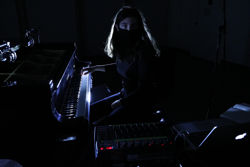
Marie Anne Bérard (she/her) is a composer, performer and pianist, currently studying electronic music at the Université de Montréal. Her interests include electroacoustic music, mixed music and performative arts. Bérard’s practice is based on real-time audio processing, sound design and the creation of a relationship between instrumental and electronic music. She wishes to show the countless sounds of her inner world and to give the audience the same feeling one has while doing things we love.
Éphémérides (2021 / 10:45)


Ephemerides are a source of various data wherein events that have happened on the same day of the year but at different periods are listed. It also reports astronomical events such as sunrise and sunset, the phase of the moon and the tides. An ephemeris indicates everything from the day-to-day to milestone events of a day. Fascinated by this word and its meaning, I composed electronic improvisations and sound recordings of my daily life to create sound ephemerides every single day. Each of them is triggered and manipulated live in this performance. With concatenative synthesis, they interact with each other, while being part of the ephemeris created in front of us. Éphémérides is a sound journal to leaf through with our ears, where the past interacts with the present.
Diego Bermudez Chamberland
JTTP 2021 Third Prize winner [ex æquo].
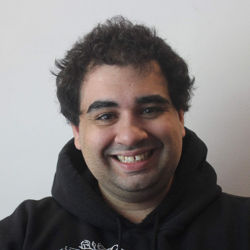
Diego Bermudez Chamberland is a Québec-based sound artist who works in several areas related to creation such as composition, sound design, installation and live performance. His practice is inspired by his human and musical experiences. Collaboration is an essential aspect of his artistic practice; he sees it as a way to transcend his reflexes and thus bring his creations to new horizons. He is also interested in the evocative power of sound and its ability to transport us into another state of mind. He devotes most of his time to exploring his discipline through multiple projects. Diego is currently completing a master’s degree in electroacoustic composition at the Conservatoire de musique de Montréal.
Destin//Trouble (2021 / 17:26)
Destin//Trouble is the second composition of an acousmatic work in three movements (Cartografía interior) that draws its inspiration mainly from Scandinavian mythology as told in Snorri Sturluson’s collection: the Edda, dated 1220. It is important to underline that the work does not try to materialize in a literal way this mythological universe, but rather proposes a free and personal sound adaptation. The result is a music that explores energy, continuous and fragmented temporality, and multiple spaces through various timbres and articulations, rather than it being a research centered on the mimicry or the literal recreation of this universe. The possible connections between some of the grand themes of Scandinavian mythology (natural forces, infinite territories and dynamism) and composition were explored during the creative process. These themes were subsequently transposed into the morphology of the sounds, the formal approach of the editing and the work of space.
Colin Frank
Recipient of the inaugural Hildegard Westerkamp Award for soundscape and sound installation.
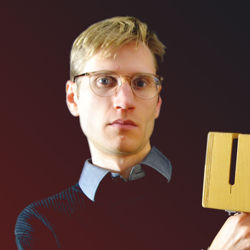
Originally from Ottawa, Colin Frank experiments with sound, electronics, sculpture, theatre and percussion, investigating excess, bodily extremes, unpredictable instruments and rich raw noises. He has worked with the Noisebringers, TAK Ensemble, AndPlay, Red Note, Gods Entertainment, Moscow Contemporary Music Ensemble, and is a founding member of the DriftEnsemble and Brutalust. He has presented in the Huddersfield Contemporary Music Festival, Berlin’s CTM festival, the Darmstadt Internationale Ferienkurse für Neue Musik, Electric Springs, SoundThought, Beast Feast and PAS Quebec Days, amongst others. Colin’s installations often involve audience interactivity and have been exhibited at Salem Art Works and Dai Hall. His PhD research at the University of Huddersfield considers how unconventional instruments and objects act and influence his creative process. He studied performance and composition at McGill University and sound at the Institute of Sonology. He has taught improvisation at the Waterloo Region Contemporary Music Festival and at Huddersfield University.
Forays into Expansive Terrain (2020 / 20:06)
The album Sounding the Weight of an Object, an Impulsive Habitat release, was recorded in outdoor locations across Eastern Canada (Ottawa, Montréal and Wingham) and Huddersfield. At each location, I performed on found or brought objects to intervene with the location’s soundscape. Environmental sounds blend with those that I created, questioning who is playing whom — do I play the environment, or does it play me? Each performance is entangled with the site’s materiality, mixing myself with microphones, structures, vegetation, animals and weather conditions. In Forays into Expansive Terrains , I performed alongside a machine behind a university technology building; a salted walkway in downtown Montréal; power generators, crickets and gusting winds after the 2018 Ottawa tornado; a bicycle journey through a forest nearby a construction site; and a metal staircase beside a canal. The recording presents how I experienced these places — spatially, materially and as vibrantly alive locations.
Pablo Geeraert and Joseph Sims
JTTP 2021 First Prize winners.
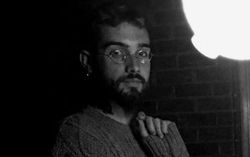
Pablo Geeraert is a Belgian composer born in Brussels and currently based in Montréal. He explores composition as a means to discover and experience the complex yet exciting dimensions that music can offer. Influenced and fascinated by a wide variety of sonic discourses, his music tries to blend them into kinetic and evolving narratives, focusing on sculpting a contrast between the sound materials to evoke images and/or reactions. Interested in multidisciplinary practices, the aspects found in other arts such as dance and the visual medias also fuel his inspiration and motivation to broaden his understanding of music. Having recently graduated with BFAs in Music Production (BIMM Berlin) and in Electroacoustic Studies (Concordia University), he is about to enter a master’s degree in Electroacoustic Composition at the Conservatoire de Montréal to further discover and define his artistic identity.
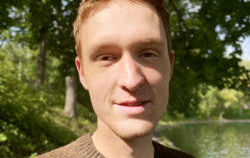
Joseph Sims is a composer and musician born in London (Ontario) and is currently based in Montréal. His work acts as an amalgamation of sonic styles, frequently exploring the relationships between concrete and electronic sources. With roots in folk music, his compositional approach remains grounded in intuition and narrative — and continually explores new sonic pallets as a means of expression. Multi-channel, fixed-medium composition is his primary focus, but a love for visual media is expressed through frequent collaboration with animators and film makers. He is currently finishing his bachelor’s in Electroacoustic Studies at Concordia University, and received the Marguerita Award in Electroacoustic Studies in 2020.
Esquisse d’une Sandbox (2021 / 11:50)
Esquisse d’une Sandbox is a scalable multi-channel piece that focuses on finding homogeneity in both the articulation of contrasting sonic materials and two artistic voices. The piece was created over a three-month period through weekly in-studio sessions. Rather than relying on a conceptual framework, the composition is a direct result of a continuous kinetic reaction to each other’s creativity. The two composers embraced the challenge of acousmatic collaboration as means to push their individual artistry.
Jean-Philippe Jullin
JTTP 2021 Fifth Prize winner.
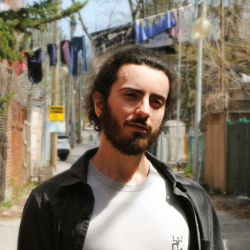
Born in Marseille (France), Jean-Philippe Jullin is a student in digital music at the Université de Montréal. Holder of a DEC in audiovisual technique, it is through his work in the field of video that his language has been shaped, mixing elements of music, video art and programming. Passionate about sound experimentation, he seeks a different way of thinking about music. His creations aspire to establish a dialogue between man and machine, allowing him to approach a multiplicity of techniques and senses. Recipient of the Faculty of Music’s excellence grant, he released an acousmatic EP in 2020 entitled nioses, broadcast on Radio Québec International. To conceive experiences of active contemplation, various elements are assembled to question our perception of space and time.
Nadir (2021 / 10:00)
A nadir is the point on the celestial sphere representing the vertical downward direction. It is the position of the sun at midnight. By extension, it means the worst time, the time of least hope and success. Nadir is the study of the lowest point. This work describes a descent in layers, depicting a dystopian vision in which any sense of improvement is illusory. The materials are abstract, born of random processes with heavy treatments, organized in time like an implosion. The darkness is then contrasted with sometimes pop sounds, a kind of hallucinated version of an apathetic world. Dark, plastic and absurd, Nadir is ten minutes of useless noise. This is my vision of the world: downward.
Antoine Lussier
JTTP 2021 Third Prize winner [ex æquo].
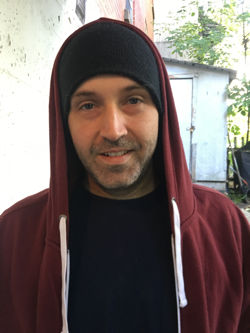
Antoine Lussier has been passionate about the sound wave from an early age. He toured internationally for several years, performing with his group Ion Dissonance as a guitarist and composer, but also as a member of pop, rock, hip hop, blues and gypsy groups. Lussier is currently a sound engineer and producer, with activities that range from directing to teaching, as he seeks to broaden this musical adventure through acousmatic composition. He is also active in various sectors of music and image creation, notably sound design for short films and music and sound creation oriented for video games. Once he graduates from his bachelor’s degree in digital music from the Université de Montréal, he intends to begin a master’s degree in research-creation at the same institution. The core of his research is dedicated to expanding the capabilities of the instrument that has brought him to this point today: the studio.
Disjonction (2021 / 10:30)
Different possibilities of temporal manipulations afforded by editing were explored during the composition of Disjonction . Using synthesis and sound recording, tiny singularities have spawned expansive constructions. Out of these luminous gestures and vast movements darkness appears. A mechanical and electrical aura feeds the piece from a material point of view, tracing a discursive course of incertain temporality; an imaginary path of a timeline weakened by disorder.
Véro Marengère
JTTP 2021 Fourth Prize winner and recipient of the inaugural Micheline Coulombe Saint-Marcoux Award for self-identified female or non-binary electroacoustic artists.
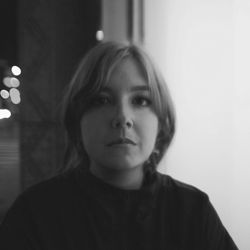
Véro Marengère is an emerging audiovisual artist and researcher based in Montréal. She creates artworks that evoke neo-animism, storytelling, ecosophy and digital intimacy. Inspired by everyday objects, technological communities, ASMR, electromagnetism and the human voice, her work takes a critical yet very playful approach to video- and music-making. Marengère is currently a graduate student in the digital music program at the Faculty of Music of the Université de Montréal, where she is studying with Myriam Boucher creating a hydrofeminist and haptic framework for video artwork. She is a teacher’s assistant for a Stereophonic Recording and Sound System course and also works in the field of digital literacy and information technology.
Roserade (2021 / 4:30)


Inspired by new materialism, ecosophy and digital intimacy, the videomusic work Roserade evokes a relationship between a desk, a rose bush and a female human. Sometimes frenetic and sometimes contemplative, it proposes a world that deforms without ever completely destroying or building itself. In this entropy the human and nonhuman explore the feeling of being interdependent, in a reality shaped by digital and ecological transformations. By this constant mise en abyme, we are reminded that we live much more in an Internet of beings than in an Internet of things.
Charles St-André
JTTP 2021 Second Prize winner and recipient of the inaugural Jean Piché Award for videomusic, new media and creative coding.
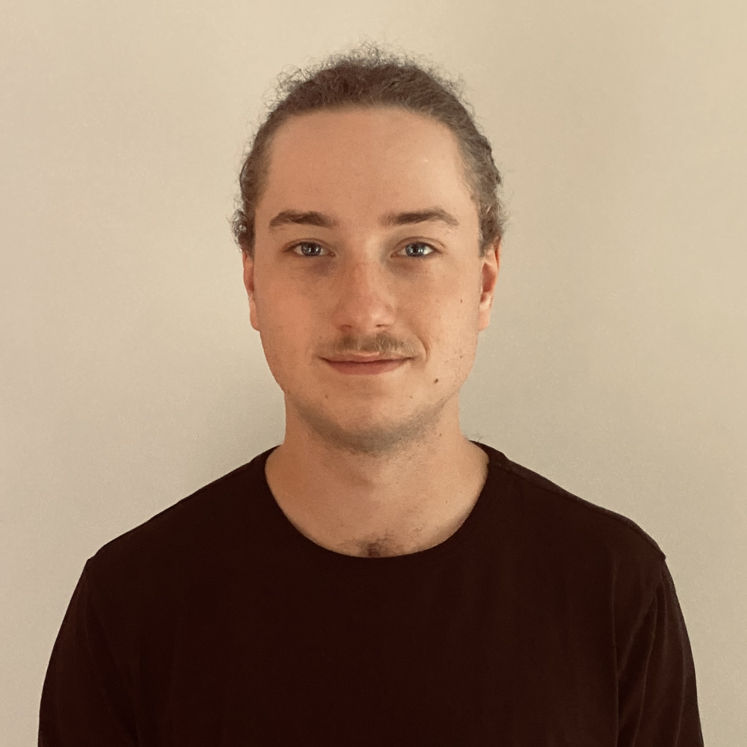
Charles St-André is an undergraduate student in digital music at the Université de Montréal. He is currently interested in the relationship of sound and image, as well as the exploration of new generative image composition tools. He is also interested in soundscapes, which are often the focal points of his compositions. Still at the beginning of his journey, he wishes to continue to discover different avenues such as programming, video mapping and interactive installations combining sound and image.
Espace Clos (2021 / 4:54)
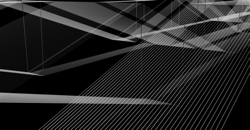

Espace clos is an audiovisual work that travels between different spaces using synthetic images. These lines that simulate the spaces are restricted by a certain frame but will try to open up in order to go beyond that area dedicated to them, being the screen upon which you are looking at this. This piece oscillates between 2D and 3D plans in order to better perceive the attempt to leave this area.
Social top